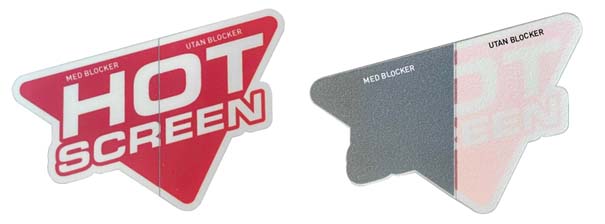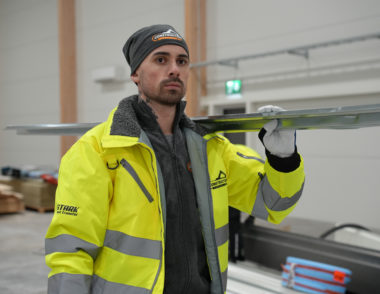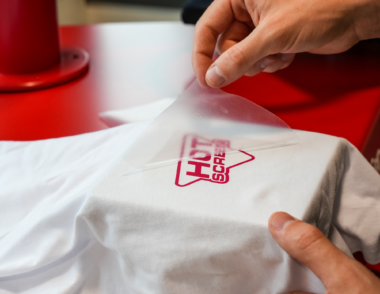About this article
Categories
Some softshell garments have a tendency to bleed through or “migrate” (as some people call it) through the heat transfer, which damages the appearance of the transfer. It might look blotchy or even as if the decal has become mouldy, but we can combat this if we start things off right.
We also have accessories in our webshop called “BLOCKER”, meaning that your transfers are of the same quality as an ordinary heat transfer but with the added property that they prevent/slow down bleeding on most materials.
We have produced an accessory to combat and minimise this phenomenon in the best possible way. We call this accessory a “BLOCKER” but it is often known as “block-out, block, blocking or black blocking”. This barrier is made up of several layers which are printed behind the motif, making the print thicker but also preventing migration in the majority of cases. Our blocker is easy to recognise because it has a grey back, instead of white.

As mentioned above, it is softshell materials that are most frequently affected by this phenomenon, and we have also noticed over the years that after a while bleeding occurs in almost every case. That’s why we ALWAYS recommend getting yourself a BLOCKER if you’re planning to apply transfer prints to these sorts of garments.
We recommend talking to your garment supplier to see if they have ever had any issues with migration. If you cannot get any information from your supplier, we will be more than happy to help you test your material in our test laboratory where you can get a test report.
ATTENTION! Applying a heat transfer to softshell clothing that hasn’t been pre-heated can produce poor results and in the worst-case may destroy the item of clothing.
About this article
Written by:
Max Schelin
Categories
Related articles

Printing on Polyester? Here's How!
Read more

Club clothing with a sustainable print
Read more

My garments: upload your own garments to our ordering tool!
Read more

Profile clothes – and the heat transfer that lasts the garment's entire lifespan
Read more
We recommend always using a BLOCKER for applications on softshell material to combat bleeding.
About this article
Written by:
Max Schelin
Categories
Related articles

Printing on Polyester? Here's How!
Read more

Club clothing with a sustainable print
Read more

My garments: upload your own garments to our ordering tool!
Read more

Profile clothes – and the heat transfer that lasts the garment's entire lifespan
Read more

Prints on workwear? Choose the heat transfer Stark!
Products
Tips & Tricks

The plotter print is a variation of our product Stark Heat Transfer.
Products

Learn more about the various print methods in the textile industry.
Print methods
Mon-Thu: 08.00-16.30
Fri: 08.00-15.30
Följ oss!
When you archive an article, it disappears from your webshop and is no longer orderable.
When you activate an article, it disappears from your archive and you can order it again